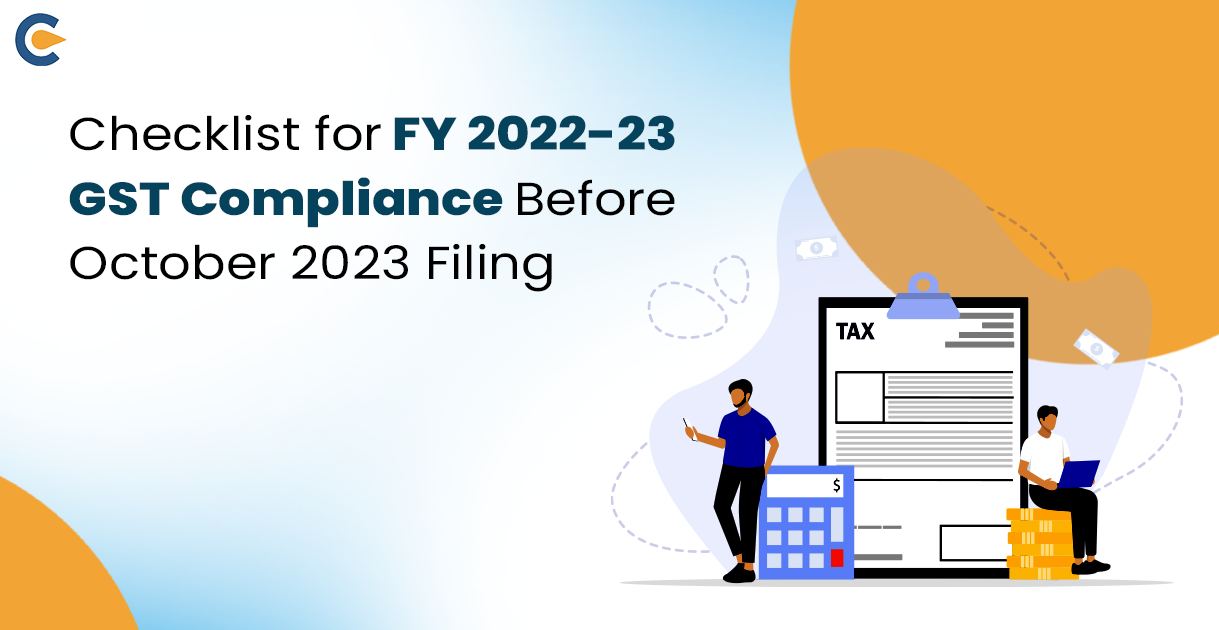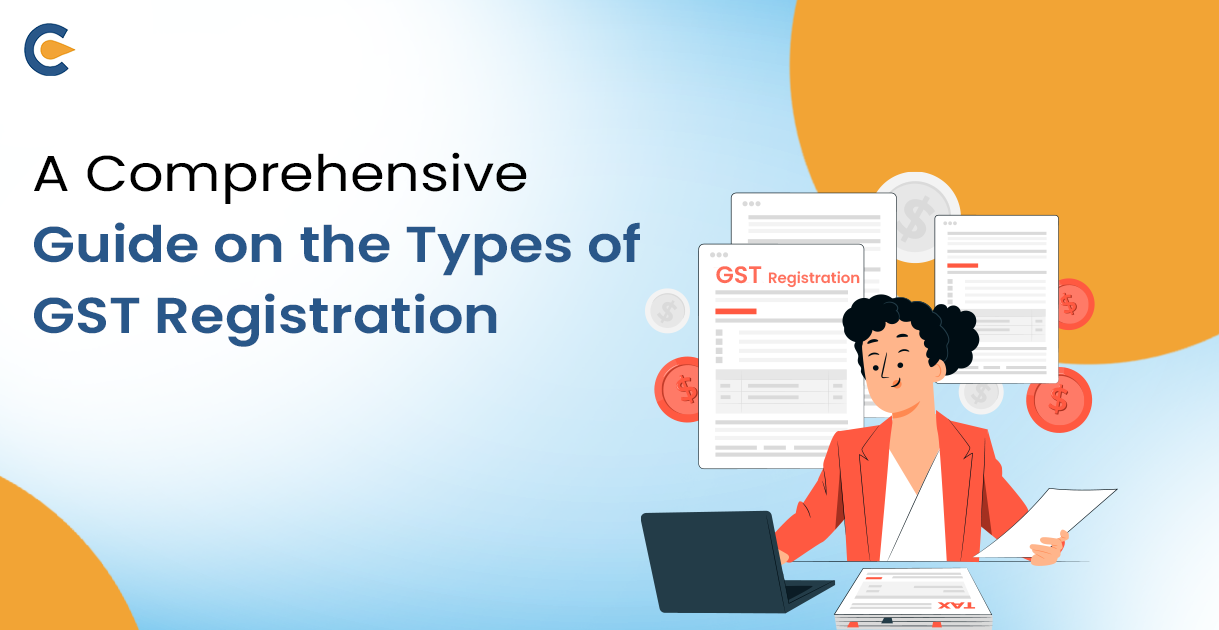We are all aware that companies of every kind and size carry out a variety of activities, including buying and selling goods. Company owners have specific responsibilities for every commercial transaction as an element of their ethical duty. Government agencies have established dates for certain obligations, and those deadlines must be met. Indian taxpayers must abide by the tax-related regulations issued by the Indian government. This GST compliance also entails following the GST return filing deadlines outlined in the compliance calendar and set forth by the government of India. For GST taxpayers, the month of October 2023 is essential since it is the last month to make alterations for any accidental errors or significant faults made when completing the GST returns for FY 2022–23.
In this blog, we are going to discuss important points that are to be considered before closing books and filing the GST return for the month of October 2023.
Goods and Services Tax
The Kelkar Task Force on Indirect Taxes originally suggested the notion of a national GST in India in 2000. With a uniform system that would make GST Compliance more accessible, reduce tax cascading, and encourage economic integration, the goal was to replace the current GST complicated and fragmented tax structure. India charges a tax known as GST on the supply of some goods and services. The purchase tax, value-added tax, service tax, excise duty, and other indirect taxes were all replaced by it when it was put into existence. Multiple indirect taxes imposed by both the Central and State Governments were replaced with the one tax system known as the GST. The GST system divides the power to tax goods and services between the Central and State Governments.
What is GST return filling?
A registered taxpayer is obliged to submit the documents to the tax administration authorities. A GST return is a document that contains all the information related to sales, income, purchases, and expenses. Under GST, there are 13 returns.
Points to be considered
Outward supplies
Outward supplies are when the goods or services or both are supplied by sales, rental, exchanges, lease, transfer, barter, disposal or in any other way go out of the business.
- Reconcile the outward supplies: Check and compare whether the information in the GSTR 1 and GSTR 3B are aligned with your records. If any discrepancies are found, corrections must be recorded in the books of accounts or in the returns of GST, whichever the case is.
- Reconcile the register of fixed assets: All the details of the fixed assets register should also be reconciled with the GST returns and checked for any anomalies, and then changes in the returns or the books of accounts as required.
- To verify IRN: IRN is the Invoice Reference Number. It is essential to confirm that for all the supplies on which e-invoicing is applicable (B2B, SEZ Supplies and exports), an IRN is generated. Check the invoices generated with your records to ensure there are no mistakes.
- Reconcile e-way bill, books of accounts and GST returns: Reconcile all the data from the e-way bill, the data of GST returns and the books for the matter of supply of the goods. If the goods are transferred without a valid e-way bill and it was not noticed at the time of the movement of the goods, it may lead to penalties at the time of departmental audits. So, ensuring there are no mistakes and differences is essential.
- Reconcile Debit and credit notes: Confirm that GSTR 1 and GSTR 3B are according to the books of accounts and make necessary changes if required.
- Reconcile Shipping Bills: Conform that the shipping bills and the details of the GSTR 1 are the same or not, in the case of the export of goods taking place.
- Reconcile advances which are received and adjusted with GSTR 1 & GSTR 3B: In the event of supply of the services, the advances received and adjusted in accordance with the books with that of the GSTR 1 and GSTR 3B, along with GST payment on the advance receipt should all be compared with each other.
- Reconcile the GST returns disclosures with the exempt, NIL-rated and non-GST supplies turnover in the books of accounts.
- Verification of HSN codes: Match and check whether both the HSN codes in the summary of the GSTR 1 of FY 2022-2023 with those in the books of accounts are the same or not. It will prove to be helpful at the time of filing GSTR 9.
- Last return: Any mistakes in the reporting of the credit notes, debit notes, or invoices made during the FY 2022-23 return filing must all be corrected, as the October GSTR 1 will be the last return for rectifying any errors.
- Tax credit notes: This will also be the last month to issue any tax credit notes and to declare them for October 2023 GST filing.
Inward Supplies
When the goods or the services or both are received, it is an inward supply. It can be through purchase or acquisition or by means of with or without consideration.
- To reconcile GSTR 2B and GSTR 3B with the input tax credit available and which is availed in the books of accounts.
- Communicate with the vendors about the supplies which are not being reflected in the GSTR 2B of the company and ask them to report them.
- The difference in the input tax credit, which is reflected in the GSTR 2B but is not yet claimed and neither is recorded in the books, must be claimed in the GSTR 3B of October 2023.
- As per rules 42 and 43 of the Central Goods and Services Rules of 2017 in case there is any exempt income, then the input tax credit reversal must be computed and taken into account in GSTR 3B.
- To verify whether the 180-day deadline of the payment for the vendors is met or not. If it is not done, then the money will be reversed with the interest and to re-avail in the supplier’s payment month.
- To confirm that GSTR 3B has disclosed all the input tax credit that is not eligible according to the books. If an ineligible input tax credit is used, then it must be reversed with the applicable interest.
- The ITC, which was reversed during the 2022-23 financial year and is also pending to be reclaimed, is to be identified and reported in the ‘Electronic credit reversal and reclaim statement’ as the opening balance.
- To make certain that the input tax credit is separately recorded and identified in books for the capital items and inputs as per the disclosure requirement mentioned in Table 6 in GSTR 9.
Reverse Charge Mechanism (RCM)
- To reconcile the RCM liability discharged in the form GSTR 3B with all the expenses identified from the books on which reverse charge mechanism is applicable (like expenses related to security, car hire charges, legal expenses, and sitting fees of the director). If there is any differential liability found, it should be discharged with the applicable interest.
- The services of import, which are disclosed in the GST returns[1], are to be reconciled with foreign expenses in the books of account, and the reverse charge mechanism liability is discharged.
- To verify that self-invoices for all the supplies issued, which attract RCM liability, are also received from the unregistered persons.
GST receivable/payable balance
To match the electronic credit ledger closing balance and cash ledger with the net payable or receivable as per books. If there is any refund claimed by the taxpayer, then consider that as well.
Additional points that are also important to consider
- To identify the shared expenditures for the separate or related individuals for which the input tax credit has been claimed, and also to cross-charge all such expenses to appropriate entities which are based on the most reasonable and logical factors.
- To verify whether the tax has been discharged in relation to the location of supply rules under the appropriate headings.
- To conduct a thorough audit of each supplier to ensure that they all are meeting the dates for their GST returns. Any errors should be pointed out immediately to prevent the government from taking any enforcement action against the taxpayer during the audit process as the recipient of the supply.
GST compliance calendar for October 2023
| GST FORM | DUE DATE | PERIOD |
| GSTR 7 | 10th October | September 2023 |
| GSTR 8 | 10th October | September 2023 |
| GSTR 1 | 11th October | September 2023 |
| GSTR 1 (QRMP) | 13th October | |
| GSTR 6 | 13th October | September 2023 |
| CMP 08 | 18th October | July-September 2023 |
| GSTR 5 | 13th October | September 2023 |
| GSTR 5A | 20th October | September 2023 |
| GSTR 3B (greater than ₹ 5 Cr) | 20th October | September 2023 |
| GSTR 3B (up to ₹ 5 Cr) | 20th October | September 2023 |
| GSTR 3B (up to ₹ 5 Cr) (QRMP) | 22nd October | July-September 2023 |
| GSTR 3B (up to ₹ 5 Cr) (QRMP) | 24th October | July-September 2023 |
Conclusion
In conclusion, it is very important to cross-check and ensure that all the information is in the books of the accounts and the GST forms. This double-checking will help in ensuring that no mistakes are made in filing. Any manual errors made will be taken into account during this, and necessary actions can be taken for the same. As October is the last month to make changes for any errors made by mistake or for any fault, it is a vital month.
Read Our Article: GST Compliance Checklist- All You Need To Know











